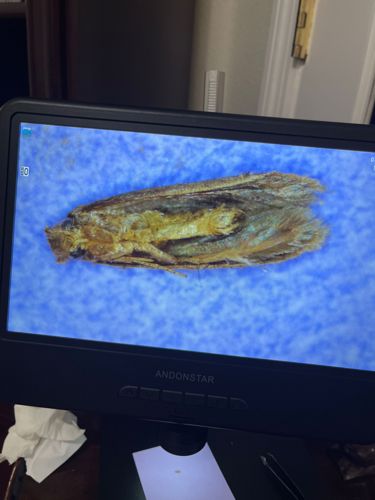Stored Product Moth
Scientific Name: Plodia interpunctella or similar species (e.g., Indianmeal Moth, Mediterranean Flour Moth)
Order & Family: Lepidoptera (Moths and Butterflies), Pyralidae (Snout Moths)
Size: Wingspan typically 12-20 mm (0.5-0.8 inches). Body length 8-10 mm (0.3-0.4 inches).

Natural Habitat
Commonly found in human dwellings, kitchens, pantries, food storage facilities, and grocery stores. They infest a wide variety of stored dry goods.
Diet & Feeding
Larvae (caterpillars) feed on a wide range of stored dry goods including grains, cereals, nuts, dried fruit, pet food, birdseed, spices, and chocolate. Adults do not feed and live only to reproduce.
Behavior Patterns
Adult moths are often seen flying in erratic patterns, particularly at dusk or in low light conditions. The larvae spin silken webs as they feed, which can mat food particles together. Females lay eggs directly on food sources. The life cycle can take 4-10 weeks depending on temperature and food availability, with multiple generations per year.
Risks & Benefits
Potential risks: Stored product moths are significant pantry pests, causing contamination and damage to food products, leading to economic losses and potential allergic reactions from consuming infested food. They do not bite or transmit diseases to humans. Benefits: No known direct benefits to humans or ecosystems, as they are primarily pests.
Identified on: 9/15/2025